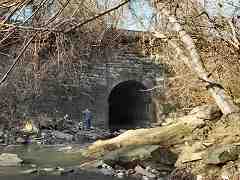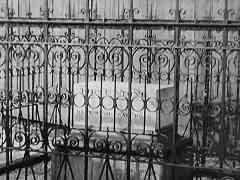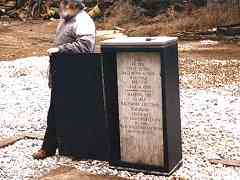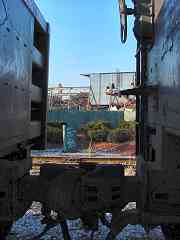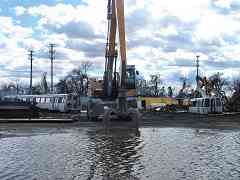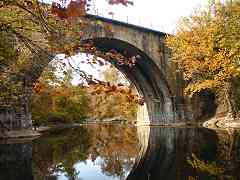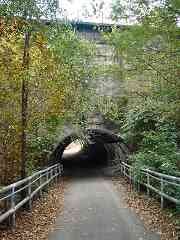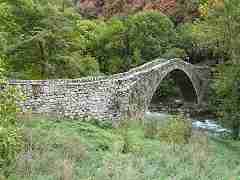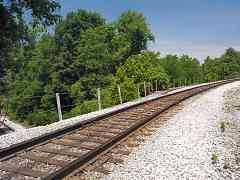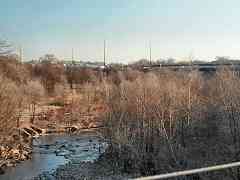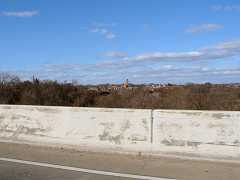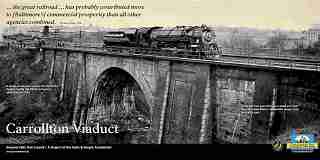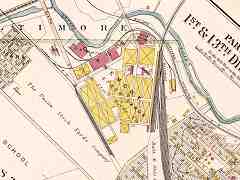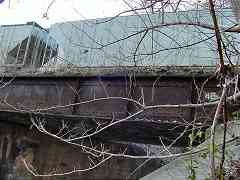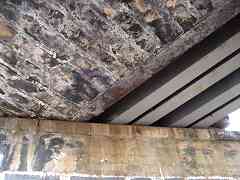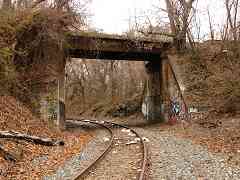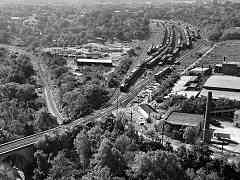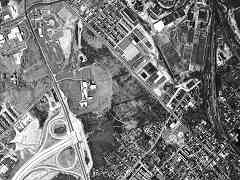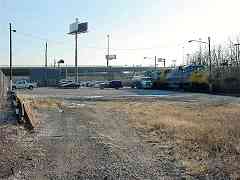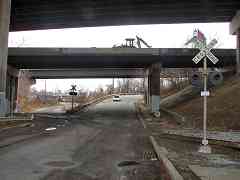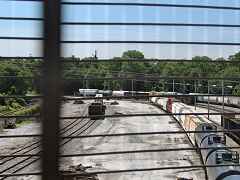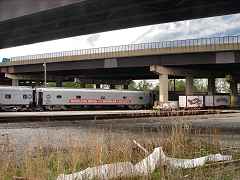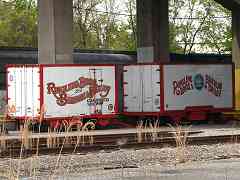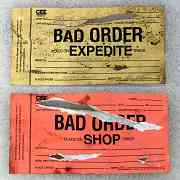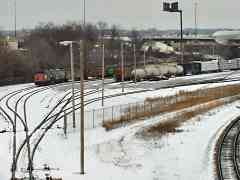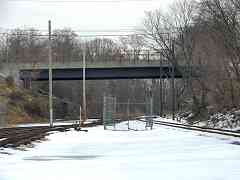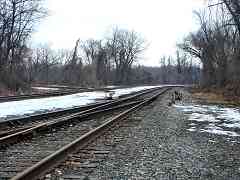|
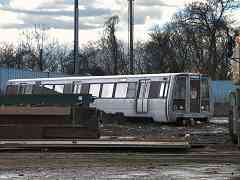
 The Washington, DC Metro System does not (yet) reach this far north, but its
oldest rolling stock, the 1000 series - aka 1K cars - are seen here being
dismantled at Baltimore's United Iron and Metal Scrapyard. Taking on the
duties of these 40-year-old originals are Metro's 7000-series cars.
The Washington, DC Metro System does not (yet) reach this far north, but its
oldest rolling stock, the 1000 series - aka 1K cars - are seen here being
dismantled at Baltimore's United Iron and Metal Scrapyard. Taking on the
duties of these 40-year-old originals are Metro's 7000-series cars.
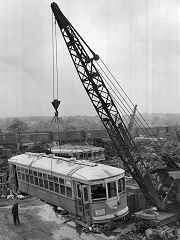 Metro's are not the first DC public transit cars to find their way here.
This is the same location that scrapped many Capital Transit streetcars,
such as number 506 seen at right during 1950 (photo courtesy
Baltimore Sun). B&O railcars are in the background.
Metro's are not the first DC public transit cars to find their way here.
This is the same location that scrapped many Capital Transit streetcars,
such as number 506 seen at right during 1950 (photo courtesy
Baltimore Sun). B&O railcars are in the background.
Two Metro cars per week have been retired and trucked up I-95 from the Metro's
Greenbelt Yard, a rate too slow to justify
their transport by rail. Furthermore, towing them on CSX's equivalent route
is complicated by incompatible braking and couplers, though they could be lifted
onto flatcars. A rusty siding into the scrapyard would need cleanup too.
Before becoming a scrap yard, this site had hosted a brick yard and Millington
Mill.
| 